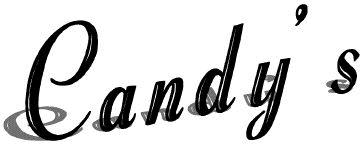

 |
 |
|
|
Chestnut Harlequin |
|
|
This is written, referring to black japanese, but of course, it applies to any color of harlequin. Most Harlequins, or at least the best ones, have at least one agouti gene (A-). If they don't have an agouti gene (aa), they will still be harlequin, but not as well marked because they will have a harlequin pattern on top of a tortoiseshell pattern. Because they have an agouti gene, you might think that all harlequins should have chestnut agouti markings, instead of black markings. They don't, because the japanese gene (ej), functions as ee genes in some places (that's the orange patches), and functions as an Ed gene in other places (that's the black patches). (The name for the Ed gene is "dominant black".) It's as if the japanese gene is two genes in one. The Ed gene is similar to the steel gene. The steel gene (Es), makes the fawn band, in what would otherwise be a normal chestnut agouti color, so small, that the overall color is almost black, but a very little bit of fawn is left, and gives it the golden ticking - thus making a black golden steel. The Ed gene is an extreme form of the steel gene. It makes the fawn band so small, that you can't see it at all, so the color looks completely black, even though it does have an agouti gene. Some geneticists say there isn't an Ed gene. They say, what other geneticists are calling the Ed gene, is just a darker version (caused by modifiers) of the Es gene. The Es gene is what makes the color steel. The harlequin pattern being what it is, makes it hard to tell if those orange hairs in the black markings are brindling or steeling. The next time we see a Harlequin, lets look at the orange hairs to see if the complete length of the hair is orange, or if there is just a small orange band, as in steel. I know I still haven't explained how there can be a chestnut harlequin. This is where the wide-band gene (ww) comes in. The wide band gene does the reverse of the Ed and Es genes. While the Ed or Es genes are narrowing the fawn agouti band, even to the extreme of it disappearing, or almost disappearing, the wide-band gene is making the fawn agouti band much wider and much more noticeable. A Harlequin with the genotype of ejejww, could look like a chestnut agouti harlequin, because the wide-band gene (ww) has restored the fawn band of the chestnut agouti color, that the Ed or Es gene normally takes out. The above tells of a Harlequin that has areas of chestnut, and areas of orange. How about a Harlequin that has areas of chestnut, and areas of black? Have you ever seen that? While researching the above, I made a discovery. In my genetic booklet, I show a table by A.G. Searle, that shows all of the different combinations of all of the genes in the E series, and what color they appear to be. I didn't know what the "agouti-steel mosaic" color could be. Now I understand. The japanese gene acts as both Ed, and as e, in separate areas. The genotype Eej, is a mosaic of black and chestnut. That is because the Ed part of the japanese gene, is dominate to E, and produces black areas. The e part of the japanese gene is recessive to E, so the E gene is manifested, and chestnut areas are produced. References: Genetic Studies of the Rabbit by Roy
Robinson; The Genetics of Domestic Rabbits by W.E. Castle; Comparative
Genetics of Coat Colour in Mammals by A.G. Searle; and Color Inheritance in
Small Livestock by Roy Robinson. |